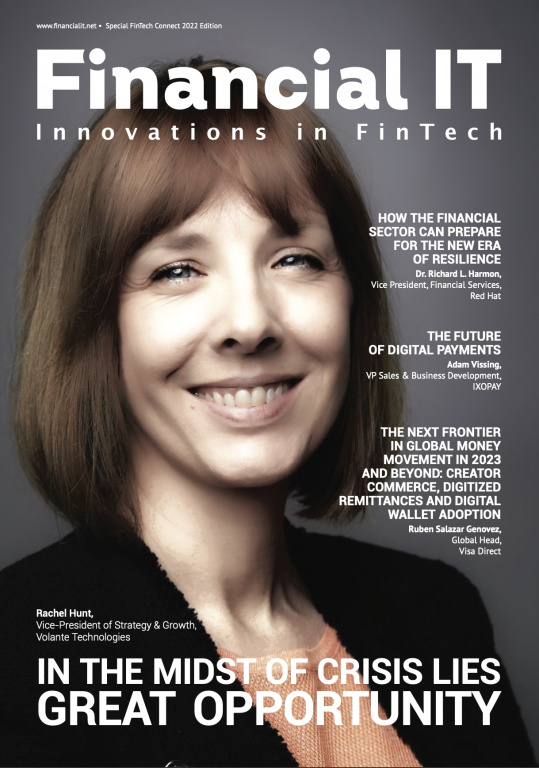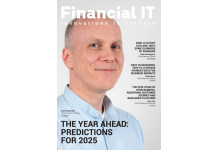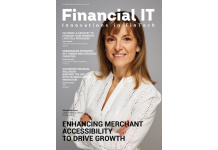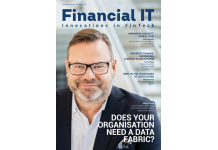Financial IT Winter Issue 2022/23

- 30 Nov, 2022 02:00 am
Financial IT receives contributed articles that, almost invariably, are forward- looking. The contributions identify the trends that apply in technology generally, cybersecurity, payments, and so on. These trends give rise to specific issues or problems, which the organisation that is contributing the article is well placed to address.
The overall message is a positive one. Protagonists in the private sector are working at the intersection of IT and financial services to produce better outcomes for customers, shareholders and other stakeholders.
What makes this edition of Financial IT unusual is that four of the articles address situations where initiatives are being taken by governments (and/or their agencies). Moreover, in each of these cases, there are very specific outcomes to look for in the next 12 months.
The European Union (EU)
In the EU, for instance, the Digital Operational Reliance Act (DORA) is likely to be passed prior to the end of this year. DORA will probably come into force in 2024 and applies to all financial institutions - ranging from established banks and insurance companies through to crypto-currency exchanges and crowdfunding platforms. It also applies to third-party providers of information and communication technologies: in other words, DORA’s ambit reaches major cloud providers such as Google, Amazon and Microsoft.
As Red Hat’s Richard Harmon notes in this edition of Financial IT:
“With the new regulation, the EU is reacting to the increasing digitisation of the financial world and the associated rising security risks, especially with regard to the outsourcing of IT services to "offshore" partners or the use of cloud offerings. Digital operational resilience is crucial here in terms of mitigating IT risks – not least from an economic perspective. While it is not easy to estimate the costs caused by operational incidents, industry research suggests a figure of between €2 billion and €27 billion per year for the EU financial sector.”
A key worry is cloud concentration risk. What would happen to particular financial institutions - or the entire financial system - if a single major cloud provider suffered a major disruption, whether for technological or financial reasons.
By late 2023, watch for:
Clear evidence of significantly greater usage of hybrid cloud solutions by all kinds of financial organisations, (in the EU and elsewhere) as managements respond to DORA.
The Kingdom of Saudi Arabia
As a part of its Vision 2030 program of transitioning to a post-oil age, the Saudi government launched the Saudi Data and Artificial Intelligence Authority (SDAIA) and two related organisations in late 2019. As is noted in this edition of Financial IT:
“In its first year of activity, SDAIA had: established a national databank, consolidating 80 different government databanks, accounting for 30% of the digital assets of the Saudi government; started building the G-Cloud, with the eventual aim of handling data from more than 40 government bodies; and using AI to identify opportunities for US$10 billion
in new revenues or cost savings for the government, ‘developing an ambitious and innovative data and AI strategy’ for the country”.
However, the scope of SDAIA goes far beyond boosting the efficiency of the Saudi government.
By late 2023, watch for:
Increased numbers of young Saudis training and working as data scientists/ coders; evidence that AI is being used by private sector organisations, and not just state-owned enterprises such as Saudi Aramco; high profile deals that give SDAIA and other protagonists control of intellectual property associated with AI.
The United States Virgin Islands (USVI)
It seems that many business that are linked to global supply chains are looking to nearshore (i.e. work with suppliers of goods and services that are geographically much closer than they were in, say, 2019).
Think-tank SEDI-CASE, which promotes the island of St. Croix, argues in this edition of Financial IT, that the USVI are ideally placed to benefit from this trend.
The USVI combines three key advantages: its geographical proximity to markets in the Americas and Western Europe; its status as an unincorporated territory of the United States; and the scale of its fibre-optic cable networks.
By late 2023, watch for:
Substantial new investment in the USVI as international businesses look to nearshore and to reduce the risks associated with their supply chains.
The World
In his Publisher’s Letter, Chris Principe considers the good and evil aspects of Central Bank Digital Currencies (CBDCs), the introduction of which is being considered many by governments and central banks around the world.
By late 2023, watch for:
Actual usage of CBDCs in one or more OECD countries and in one or more large emerging markets; and/or massive discussion in the mainstream media about the pitfalls of CBDCs.
Once again, we thank all subscribers and contributors. We wish all of you the best for the festive season and the New Year.





















